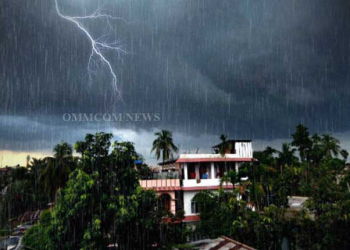Bhubaneswar: The extremely severe cyclonic storm “Mocha” over the east-central Bay of Bengal moved nearly north-northeastwards with a speed of 17 kmph during the past 6.00 hours and lay centered at 5.30 am on Sunday over Northeast and adjoining east-central Bay of Bengal near latitude 18.7°N and longitude 91.5°E, about 790 km north-northwest of Port Blair, 300 km south-southwest of Cox’s Bazar (Bangladesh) and 210 km southwest of Sittwe (Myanmar).
It is very likely to move north-northeastwards and cross southeast Bangladesh and north Myanmar coasts between Cox’s Bazar (Bangladesh) and Kyaukpyu (Myanmar), close to Sittwe (Myanmar) around Sunday as an extremely severe cyclonic storm with a maximum sustained wind speed of 180-190 kmph gusting to 210 kmph.
The India Meteorological Department (IMD) has issued a warning for fishermen in deep sea areas of the Bay of Bengal. It says that under the influence of the system, winds and sea conditions in different areas of the Bay of Bengal are as follows:
- East-central Bay of Bengal:
Gale wind speed reaching 210-220 kmph gusting to 240 kmph is prevailing over the region. It would decrease gradually to become 150-160 kmph gusting to 175 kmph by noon of 14th May. It would decrease rapidly thereafter.
- Adjoining areas of the west-central Bay of Bengal:
Gale wind speed reaching 100-110 kmph gusting to 120 kmph is prevailing over the region. It will decrease gradually thereafter becoming squally wind speed reaching 40-50 gusting to 60 kmph by May 4 noon.
- Northeast Bay of Bengal:
Gale wind speed reaching 210-220 kmph gusting to 240 kmph is prevailing and it would continue till May 14 at noon. It is likely to decrease thereafter to 180-190 kmph gusting to 210 kmph at the time of landfall. It is likely to decrease rapidly after the landfall.
- Adjoining areas of Northwest Bay of Bengal:
Gale wind speed reaching 60-70 kmph gusting to 80 kmph is prevailing over southeast sector of the region and 45-55 kmph gusting to 65 kmph over the remaining areas of northwest Bay of Bengal. It is likely to decrease rapidly after the landfall.


















